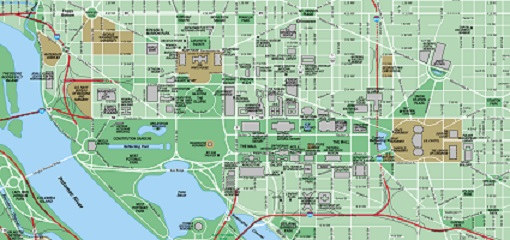Rockville, MD
Rockville is a small suburb of Maryland that has a population of a little over 50,000 people. While it may not be the biggest place in the world, its location is what makes it such a hotbed of startup activity. Its proximity to a number of major national laboratories makes Rockville specifically a hub of the biotech industry, and it means that there are a lot of funding sources available for the right type of startup.
San Francisco, CA
San Francisco, California, is known mostly for its art and culture, but it also has a bustling economic scene in these tough times. The real benefit of operating out of San Francisco is the convergence of academia and business. There are a lot of established universities out here, as well as a lot of giants in the technology industry.
Franklin, TN
Franklin, Tennessee, is a small town about the size of Rockville, but is more of an entity of its own. There is a major biotechnology push in Franklin, with the university putting up state-of-the-art facilities to push development in that sector. More than half of the people living in Franklin have at least a four-year college education, and the technology industry here is on the rise.
Bellevue, WA
Close to the home of such giants as Microsoft, Bellevue, situated in Washington, is one of the hottest spots of activity in the technology sector in the country. Bellevue’s residents hold more patents than any other city in the country, and there are a lot of tax incentives for small startups, especially in the technology sector. Being so close to many of the larger, older technology firms gives startups the ability to utilize a wealth of industry information that is more readily found in this area than in other areas.
Cambridge, MA
Cambridge will be recognizable to most people as the home to both MIT and Harvard, two of the most prestigious universities in the world. As a town of roughly 100,000 people, Cambridge maintains a very low-key persona that carries an air of growth. The town has a reputation to uphold as one of the hotbeds of advancement in the country, and the incentives for small business development here are ample.
Irvine, CA
Irvine, California, has a number of things going for it that make it very attractive for startups. It is right outside of Los Angeles, so it is mostly populated by technology and entertainment-based startups, but there are many different businesses here. One of the most attractive aspects of the city is that it gives entertainment and technology startups access to Los Angeles without actually having to be located in the city itself.
Bend, OR
Bend, Oregon, has experienced a growth rate of 50 percent over the past decade, and it doesn’t show any signs of slowing down. The town itself used to be centered around logging, but has since become very involved with the technology, aviation, and biotech industries.
Santa Monica, CA
Santa Monica, California, has become very popular for film startups over the past decade. The proximity to Los Angeles is the big draw here, with business owners getting all the benefits of Los Angeles without the stifling taxes that come with living in the city. Digital media production companies find that they are able to compete with larger film companies while operating out of Santa Monica.
Boca Raton, FL
Looking to shirk its reputation as nothing but a paved old folks home, Boca Raton, Florida, is very welcoming of startups, especially in the technology industry. There are a lot of smaller companies that work here that have been started by employees of IBM, which has operated out of Boca Raton since the 1970s.
Boulder, CO
Boulder, Colorado, has become something of an icon of the technology startup community. As the university has advanced its technology base over the past ten years, more and more businesses have been developing here from the resulting boom in startup grant funding. There are a number of national research labs maintained in Boulder, and these labs bring in a swathe of talent from around the globe– making Boulder a hotbed of activity in the technology industry.

 The United States office market is characterized by its wide range of properties, ranging from affordable shared spaces to expensive trophy offices in some of the world’s most desirable business locations. In mid-2020, average gross rates for offices nationwide stood at $35 per square foot with the
The United States office market is characterized by its wide range of properties, ranging from affordable shared spaces to expensive trophy offices in some of the world’s most desirable business locations. In mid-2020, average gross rates for offices nationwide stood at $35 per square foot with the  Bolstered by a robust economic performance, the office market in Washington DC delivered a fine performance throughout 2015. Unemployment levels in the DC metropolitan area were at their lowest since 2008, reaching figures well below the US national average (4.3 per cent vs 5 per cent). These conditions have helped shape a real estate market that is predominantly favourable to landlords, as the following trends demonstrate:
Bolstered by a robust economic performance, the office market in Washington DC delivered a fine performance throughout 2015. Unemployment levels in the DC metropolitan area were at their lowest since 2008, reaching figures well below the US national average (4.3 per cent vs 5 per cent). These conditions have helped shape a real estate market that is predominantly favourable to landlords, as the following trends demonstrate: